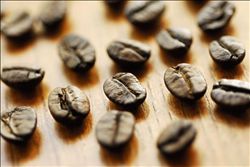The characteristics of several major coffee producing areas in Ethiopia introduction to the Flavor description of Fine Coffee varieties
Harald is famous for its special bean variety "long bean (Longberry)", which is processed by dry method. This coffee has a fruity aroma of red wine. It is this unique aroma from the Harald region that gives the mellow aroma of the Arabica coffee we usually drink.
Kinby and Cedamo produce washed coffee. Kimbe Coffee has a balanced taste and a stronger flavor than Harald Coffee. Cedamo coffee is lighter, milder, smooth taste and pleasant aroma. All coffee from Ethiopia is not suitable for deep roasting. Locals believe that high temperature will destroy the original quality and taste of coffee. The grading standard of Sidamo is according to the defect rate. The less defective beans in the same weight standard, the better the quality and the higher the grade! Generally divided into two and three levels (G2, G3), water-washed Sidamo because the treatment process is more perfect than the sun, so most of the G2 level exports are more. Most of the sun-processed coffee is grade 3 or grade 4 or grade 5 (G3, G4, G5). In many cases, level four coffee will be marked as level five, but that is to reduce taxes. The current classification is not very uniform and a bit messy, but whatever you see marked G1, it must be the highest level of Sidamo, whether it's washing or tanning. Sidamo, one of the three major producing areas in Ethiopia
Ethiopia fought a two-year trademark battle with coffee giant Starbucks over the trademark of Sidamo in 2005, because Starbucks applied for Sidamo as a trademark as early as 2004. when Ethiopian farmers recovered only $1.45 a pound, beans from Sidamo were sold by Starbucks at $26 per pound. From this we can see how profitable Starbucks is. However, under the pressure of international public opinion, Starbucks finally gave up the competition for the Sidamo trademark in 2007. Today, the trademarks of the three major producing areas, Yegashifi, Harald and Sidamo, are all in Ethiopia's own hands, and the hard-working farmers have been rewarded accordingly. in order to continuously deliver the boutique coffee produced here to the hands of coffee lovers around the world.
Of the nine major coffee producing areas in Ethiopia, Hidamo and Yegashafi are the most outstanding. Yega Xuefei originally belongs to the sub-region of Hidamo, which is independent because of its special flavor. Its rich and complex fruit aroma makes it an international hit almost overnight, becoming a hot target for experts and expensive.

Important Notice :
前街咖啡 FrontStreet Coffee has moved to new addredd:
FrontStreet Coffee Address: 315,Donghua East Road,GuangZhou
Tel:020 38364473
- Prev

Description of Arabica Coffee Flavor and introduction of Robosta's characteristic Variety producing areas
There has long been a theory that Roberta produces better crema during punching, which is true. Because the aroma composition and aromatic oil content of Roberta is only half that of Arabica coffee. This means that less oil is quenched into coffee, thus reducing the effect of oil on foam stability, so increasing Roberta will reduce overall quenching from coffee powder.
- Next

Introduction to the characteristics of varieties with flavor and taste of Honduran coffee beans
From its independence in 1821 to 1978, Honduras has had 139 coups, making it one of the countries with the most frequent coups in Latin America. Ramon Bilda Morales of the Liberal Party won the election in 1957 as president. Oswald Lopez Arellano, commander of the armed forces, launched a coup instigated by the United States in 1963, overthrew the Morales regime, and was elected general in 1965.
Related
- Detailed explanation of Jadeite planting Land in Panamanian Jadeite Manor introduction to the grading system of Jadeite competitive bidding, Red bid, Green bid and Rose Summer
- Story of Coffee planting in Brenka region of Costa Rica Stonehenge Manor anaerobic heavy honey treatment of flavor mouth
- What's on the barrel of Blue Mountain Coffee beans?
- Can American coffee also pull flowers? How to use hot American style to pull out a good-looking pattern?
- Can you make a cold extract with coffee beans? What is the right proportion for cold-extracted coffee formula?
- Indonesian PWN Gold Mandrine Coffee Origin Features Flavor How to Chong? Mandolin coffee is American.
- A brief introduction to the flavor characteristics of Brazilian yellow bourbon coffee beans
- What is the effect of different water quality on the flavor of cold-extracted coffee? What kind of water is best for brewing coffee?
- Why do you think of Rose Summer whenever you mention Panamanian coffee?
- Introduction to the characteristics of authentic blue mountain coffee bean producing areas? What is the CIB Coffee Authority in Jamaica?

